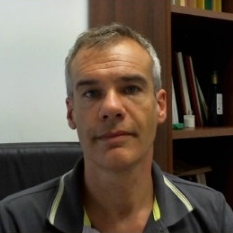Physiological Responses of Tree Fruits to Environmental and Management Factors II
A special issue of Plants (ISSN 2223-7747). This special issue belongs to the section "Horticultural Science and Ornamental Plants".
Deadline for manuscript submissions: closed (30 January 2023) | Viewed by 17513
Special Issue Editor
Interests: water relations; carbon partitioning; deficit irrigation; fruit quality and production systems of tree crops
Special Issues, Collections and Topics in MDPI journals
Special Issue Information
Dear Colleagues,
Today, climatic changes and the sustainability of management practices are two major priorities for tree fruit scientists and growers. In the last few decades, plant molecular techniques have represented, and continue to represent, a very powerful tool. Together, plant molecular biology and biochemistry have boosted advances in basic tree physiology and fruit production. On the other hand, the tremendous advances in sensors (proximal and remote), as well as the application of information, communication, and artificial intelligence technologies to several smart solutions, have opened the doors to a wide array of precision operations for the sustainable management of tree fruits, promising a significant increase in production efficiency.
Nevertheless, trees respond to external stimuli by adjusting several physiological processes. All those physiological adjustments have small or large direct or indirect effects on tree growth and fruit production. Hence, to understand why trees grow and produce differently under various environmental and management regimes, we need to acquire a full comprehension of these complex mechanisms and processes and their modulation in response to external factors.
Today, our understanding of whole-tree functioning as the integration of multiple physiological processes is suffering from, on one side, a knowledge gap with respect to advanced information on basic molecular mechanisms, and on the other side, the potential application of smart technologies for precise orchard management. Such a gap can be filled by fostering studies on applied physiological processes related to tree growth and fruit production modifications mediated by environmental and management factors.
This Special Issue seeks to stimulate and collect these kinds of studies, keeping in mind that whole-tree fruit physiology must represent the basis for sustainable fruit production in a changing environment. All improvements in orchard and vineyard management systems have been, and will continue to be, achieved through advances in tree fruit physiology, from basic molecular processes to integrated whole-tree mechanisms affecting growth and fruit production.
Prof. Dr. Riccardo Lo Bianco
Guest Editor
Manuscript Submission Information
Manuscripts should be submitted online at www.mdpi.com by registering and logging in to this website. Once you are registered, click here to go to the submission form. Manuscripts can be submitted until the deadline. All submissions that pass pre-check are peer-reviewed. Accepted papers will be published continuously in the journal (as soon as accepted) and will be listed together on the special issue website. Research articles, review articles as well as short communications are invited. For planned papers, a title and short abstract (about 100 words) can be sent to the Editorial Office for announcement on this website.
Submitted manuscripts should not have been published previously, nor be under consideration for publication elsewhere (except conference proceedings papers). All manuscripts are thoroughly refereed through a single-blind peer-review process. A guide for authors and other relevant information for submission of manuscripts is available on the Instructions for Authors page. Plants is an international peer-reviewed open access semimonthly journal published by MDPI.
Please visit the Instructions for Authors page before submitting a manuscript. The Article Processing Charge (APC) for publication in this open access journal is 2700 CHF (Swiss Francs). Submitted papers should be well formatted and use good English. Authors may use MDPI's English editing service prior to publication or during author revisions.
Keywords
- branch autonomy
- carbohydrate metabolism
- carbon partitioning
- crop load
- drought
- fruit development
- fruit quality
- fruit tree growth
- light interception
- net assimilation
- nutrient use efficiency
- root growth and architecture
- source–sink relations
- yield efficiency
- water deficit
- water relations
- water-use efficiency
- whole-tree physiology






